In a state as big as Western Australia, driving holidays often mean a long time behind the wheel.
While it’s exciting to explore some of WA’s more remote destinations, regional and remote driving conditions present very different risks to urban driving.
So, if you’re gearing up for a WA road trip, make sure you understand what you may have to deal with on the trip and how to stay safer in what can sometimes become very challenging driving conditions.
1. Keep a safe distance, especially on loose surfaces
Some regional roads have loose, gravel surfaces, which create dust clouds and hamper visibility. There is also a risk of stones flying up and damaging the windscreens of passing vehicles or those following behind.
The risk of skidding and losing control of your car is also much greater on gravel and dirt roads so always slow down on unsealed roads.
On good quality bitumen and in good road conditions, a general guide is to follow the two-second rule. When the car in front of you passes a landmark, like a tree or pole, you should pass that same landmark roughly two seconds after them. Sound out ‘1001, 1002’ and if you reach the point before you say ‘two’, then you’re too close and need to slow down.
But it’s a different rule of thumb altogether if you’re driving on unsealed roads, or when it is dark, wet, hazy, or foggy. In these circumstances the ‘cushion of space’ should be extended to at least four or five seconds. You should also give yourself some extra space if you’re towing a caravan or trailer, or driving a heavy vehicle. This gives you a greater margin of error should you need to brake or react suddenly in an emergency.
Don’t forget, these are just guides - if you feel it’s safer to travel a little further behind the vehicle in front, do so.
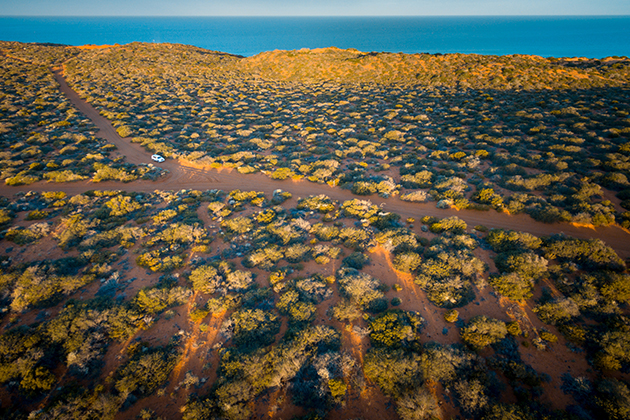
2. Turn off your high beam around other vehicles
When driving at night on long stretches of country road with no street lighting, using headlights on high beam provides a way to see more of the road ahead.
However, these lights can create glare for oncoming vehicles.
The advantage of newer headlights can be a much longer and defined beam of light which allows you to see further and makes it easier for other drivers to see your vehicle. Halogens, which were once the most common headlights, are becoming less common in new vehicles as brighter and more energy efficient High Intensity Discharge (HID) lights take over. LEDs, which are an even more advanced headlight technology, are also brighter and more energy efficient than halogens.
To protect drivers from the glare of these new and improved lights, there are regulations set by the Australian Design Rules (ADRs) that require washers and self-levelling systems designed to reduce the chances of drivers in oncoming vehicles being dazzled.
You must not use high-beam when a vehicle is within 200 metres of you. This applies to driving behind someone and to oncoming cars. You must also make sure you turn your high beams off if a vehicle coming towards you has their headlights dipped.
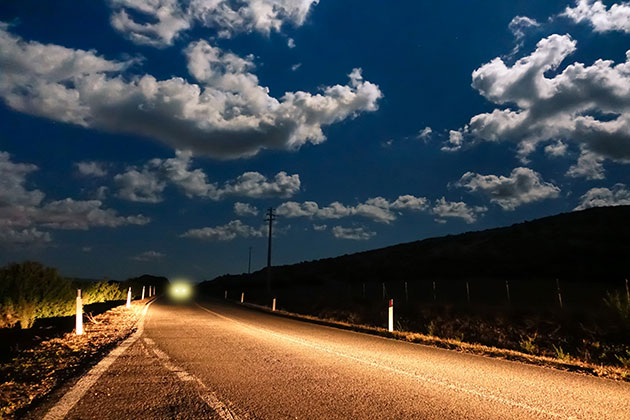
Not all cars have adaptive or automatic headlights, and so the driver must be aware of their surroundings and responsive to other cars in their vicinity. Additionally, sometimes these systems may not detect oncoming vehicles, or be late to respond, meaning drivers should always be ready to intervene if needed.
If you’re driving between sunset and sunrise or in bad weather and visibility is poor, remember to switch on your headlights. If your vehicle is fitted with daytime running lights, it’s a good idea to switch them on. These lights help make your vehicle more visible during the day.
Fog lights can only be used in the case of fog and hazardous weather conditions. In this instance, they can stand in the place of dipped-beam headlights.
You’ll rarely need fog lights in WA’s weather conditions and there’s no legal requirement for them. For some cars, they are still only an optional extra.
If the fog conditions are severe, remember to drive slowly, turn on your windscreen wipers and never put your fog lights and headlights on at the same time.
For many in larger four-wheel drives, additional driving lights and/or LED light bars might be fitted to offer even greater visibility during night-time driving. In that case, motorists are only allowed a maximum of four additional lights for which the same rules of high beam and fog light usage apply.
Inappropriate use of headlights, high beams and fog lights could land you with a fine and demerit points if you’re not careful.
3. Don't attempt to cross flooded roads
It goes without saying that driving into water of unknown depth and current is very dangerous. Driving through a flooded road can also damage your engine, warp your brake’s rotors, and short circuit your car’s electric systems including those controlling windows and door locks.
While you may think you’re better off in a four-wheel drive, if you’re heading to areas that could be affected by flooding, trying to cross is very risky and you can lose control of a four-wheel drive in only 30cm of flowing water.
In a small car, 15cm of water is enough to sweep your car away. Check your car’s maximum wading depth before you head off, which you should be able to find in the owner’s manual or check with the vehicle manufacturer.
If you can’t see the condition of the road through the water, there’s no way of knowing what obstructions or dangers may be hidden beneath that may damage your vehicle and pose a risk to safely crossing. This is where your four-wheel drive may not make a difference, as bridges may be washed away or the road surface may be compromised.
Floodwater may also contain snakes, dead animals, sewage and other contaminants that should be avoided.
That’s why it’s never a good idea to take the risk. You should turn around and find an alternative route.
To stay up to date with the latest flooding reports, listen to local radio and visit the Main Roads WA website.
RELATED:
Top 5 road trips up north »
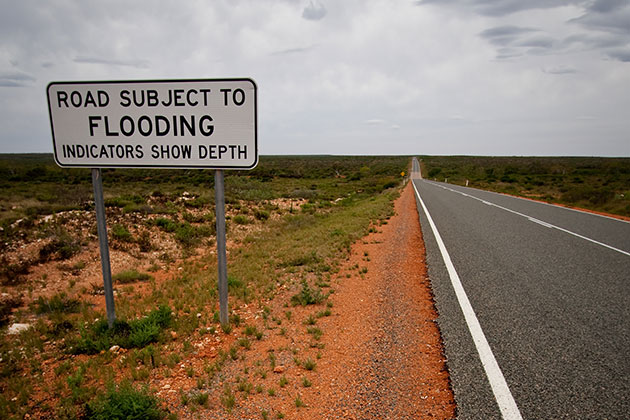
4. Be prepared for bushfire season
WA is prone to bushfires throughout the year, but the hottest and driest months pose the greatest threat. Consider whether it’s bushfire season in the area you’re travelling to.
If you’re heading north to the Pilbara or Kimberley regions, bushfire season typically runs from June to October. From the Mid West to the south, bushfire season lasts from October to April.
Before heading off, make a note of the major roads and highways you’ll be travelling on, then check if any have been affected by bushfires using the Department pf Fire and Emergency Service's Emergency WA Warnings and Incidents Map, which provides details of active bushfires, floods, storms and other natural disasters, or by calling Main Roads on 138 138. Stay tuned to local ABC radio for bushfire alerts.
While you’re travelling, keep an eye out for road signs with the latest Fire Danger Ratings.
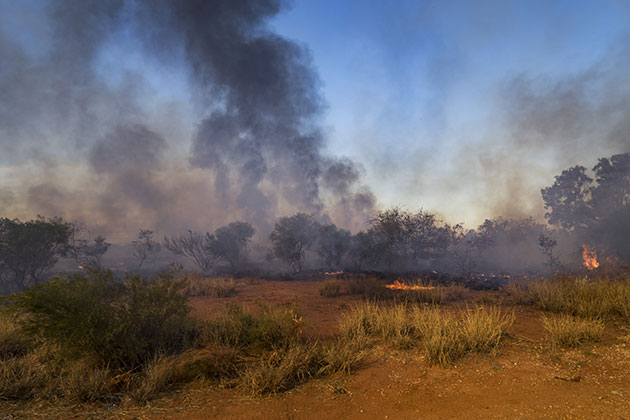
DFES strongly recommends packing a bushfire emergency kit to be prepared for any unexpected dangers or injury. It should contain a first aid kit, an AM/FM portable radio, woollen blankets, spare batteries for the radio and other battery-powered devices, a detailed map, sturdy shoes, full-coverage cotton or woollen clothing, and plenty of drinking water.
If you’re travelling with a caravan, there are extra considerations. Ensure any additional electrical and gas appliances are appropriately fitted, in good working order, and turned off while travelling. It’s also important to make sure they are properly and securely stowed away.
Make sure the caravan is equipped with a fire extinguisher, fire blanket and smoke alarm.
Stay aware of the potential dangers that may be around you, look out for things like fallen trees and powerlines down. If you’re on the road and see smoke ahead, as soon as it’s safe to do so, turn around and drive away from the fire.
5. Overtake safely
On roads with multiple lanes travelling in the same direction, you can change lanes only if the white dividing line is broken. However, you may find yourself on sections of road that have a continuous (or unbroken) white line. You cannot change lanes to overtake when there is a continuous white line unless you’re avoiding an obstruction, passing a cyclist, obeying a traffic control signal which applies to the first marked lane, or you are moving into or out of a special purpose lane which you’re permitted to drive in. If the posted speed limit is 90km/h or more then you should stay in the left lane unless an exception applies, for example you are overtaking, turning right, making a U-turn (where permitted) or avoiding an obstruction.
Roads marked with centre or dividing lines used to separate traffic travelling in opposite directions must also not be crossed except for a few instances. If you find single or two parallel continuous lines, or a continuous line to the left of a broken line (making it closest to you), you must not travel on, over, or to the right of the dividing line, unless you’re passing a cyclist, turning right or making a U-turn (where permitted).
If you need to overtake without an overtaking lane, only do so when you’re legally permitted to, and are travelling on a long stretch of straight road where you have a clear view of oncoming traffic. You should not overtake when approaching a crest or curved section of road where you can’t see a vehicle approaching from the other side.
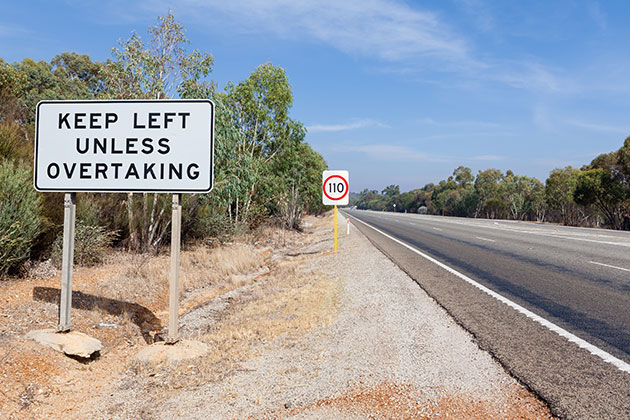
If you are being overtaken by another vehicle on a road without an overtaking lane, you should move to the left and not increase your speed until the other vehicle has completely passed you.
Road trains, trucks and caravans are common on regional roads, take longer to accelerate and are restricted to a maximum speed of 100km/h, so you may at some time find yourself behind a slow-moving vehicle.
Large road trains on regional WA roads can be up to 53.5 metres in length – the equivalent of around 12 cars placed bumper to bumper. They are some of the longest road trains in the world and can take more than 1.5 kilometres of road to safely overtake. Take extra care when overtaking any vehicle displaying a ‘Road Train’, ‘Oversize’ or ‘Long Vehicle’ sign.
Just like cars, road trains have blind spots. To ensure the driver can see you, make sure you can always see both of the road train’s side-view mirrors when following behind. This is especially important before you overtake, as road trains can sway from side-to-side, particularly the last trailer.
When it’s safe to pass, indicate, move right and carefully overtake. Remember, you’re not permitted to accelerate past the posted speed limit when overtaking.
Due to their weight, road trains need a much longer stopping distance than a light vehicle, so cutting back in front without leaving a safe gap won’t allow enough space for the road train to slow down if you need to brake suddenly. A general rule of thumb is to only move back into the left-hand lane once you can see both the of road train’s headlights in your rear-view mirror, so make sure you give yourself plenty of time to overtake safely.
If you’re towing a caravan or trailer, waiting for an overtaking lane is always a safer option as you’ll need extra time to overtake. The wind turbulence from the truck or road train can also cause your caravan or trailer to sway when passing.
Remember, you must not exceed the posted speed limit while overtaking.
Consider whether you actually do need to overtake the vehicle in front. A 10 per cent decrease in speed will have a small impact on your journey time but can reduce deaths and serious injuries by up to 30 per cent in high-speed environments.
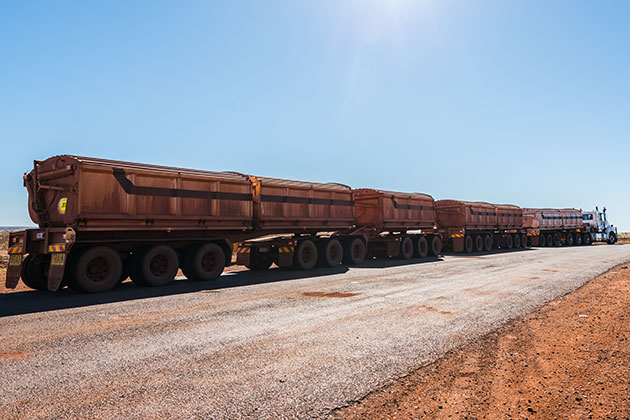
6. Avoid animal collisions
Driving in remote and regional areas of WA means sharing the road with more than just other vehicles.
Wild animals and livestock are a common sight on our country roads and all motorists need to be prepared to respond to the movements of animals while driving outside metropolitan areas.
Crashes with kangaroos are common across WA, but crashes with livestock are also a danger, with the greatest number of livestock crashes occurring in the state’s pastoral regions, including the Kimberley, Mid West Gascoyne, Pilbara and Goldfields-Esperance.
According to Main Roads WA, between 2015 and 2019 approximately, 218 crashes occurred with livestock in pastoral regions and 99 per cent of those involved cattle.
While kangaroos and other wild animals may startle drivers by moving unpredictably near roads, cattle crossing roads can be slow and motorists should exercise patience, approach slowly, and be prepared for any unexpected movement from the animals. If you spot an animal on or near the road, attempt to brake, but don't swerve as this can endanger yourself and your passengers.
Extra care should also be taken when driving from dusk to dawn. Dusk and dawn are when animals – notably kangaroos - are at their most active. To reduce your risk of an animal collision, avoid travelling at these times.
Some kangaroos can weigh up to 90 kilograms and move at a speed of 70km/h, which could cause considerable damage to your car and is a significant safety risk to those inside.
If you’re heading into an area where kangaroos are common, slow down and sound your horn – the loud noise can help dissuade them from coming closer to the road.
RELATED:
What to do if you find an injured animal at the roadside »
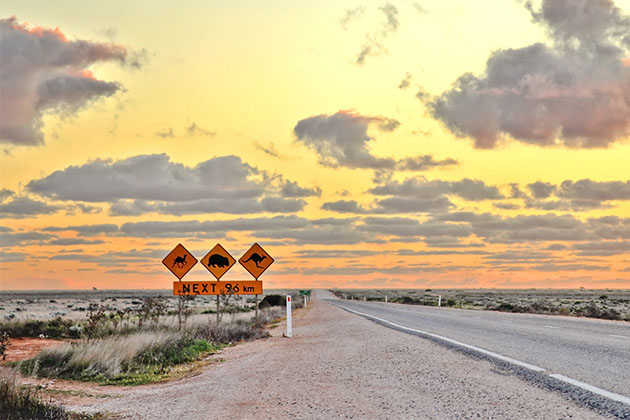
7. Cap driving time and make regular stops
Long car trips can be fatiguing for the driver, and sadly most fatigue-related fatalities occur in regional WA, so the importance of feeling well-rested and alert cannot be overstated.
It’s generally suggested to take a break every two hours for at least 15 minutes, and to limit your driving to eight hours each day. Take regular short breaks as often as you need, ideally before you feel fatigued. To help drivers on their way, Main Roads WA has a guide to designated rest areas across the state where you can take a break from driving – it’s a good idea to roughly plan some rest stops before you head off.
Parking and facilities vary at these sites, so be sure to visit the Main Roads WA map to search and filter by amenities. There are more than 900 designated parking bays which provide a safe place to stop. You’ll find around 500 stops with toilets, tables and rubbish bins to dispose of your waste.
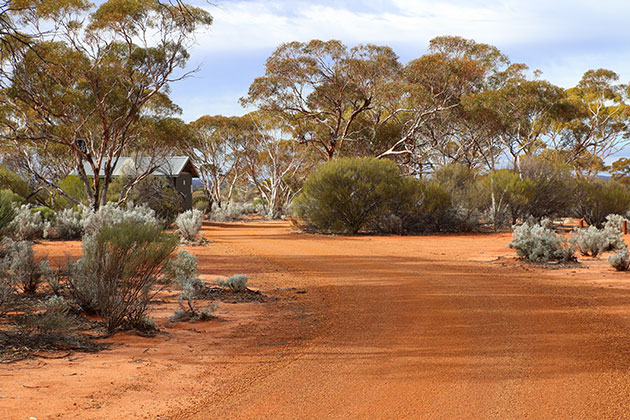
If you’re travelling with a caravan or camper trailer and need to dispose of sewage and wastewater, look out for the ‘effluent dump site’ sign at rest areas on your journey or plan ahead with the travel map.
If you need to stay somewhere overnight, 70 rest areas allow for overnight stays. But keep in mind these sites have a 24-hour limit so don’t overstay.
If you’re travelling with other people, regularly swap drivers if possible. This gives you the chance to rest and enjoy the ride.
It also helps to know the signs of fatigue, such as yawning, blinking more or less than usual, making poor decisions and having a slower reaction time, so you can recognise when you’re getting tired and take a break.
8. Prepare before leaving
Before setting off, plug your destination into your GPS and plan your stops. Also be sure to bring an up-to-date paper map. Although they’re not as compact as a GPS device or mobile phone, paper maps don’t lose battery or coverage, and are a great back-up if other systems fail you.
Also prepare your driver’s seat - an incorrect driving position, such as sitting too high or too low, can reduce your visibility and can become uncomfortable after long periods of driving. A good rule is to allow a slight bend in your knees, straightened arms on your steering wheel and your head positioned in the middle of your headrest.
Ready to hit the road?
To help you travel safely, RAC is offering free car checks and caravan safety sessions across Perth and regional WA.
Last updated March 2022
